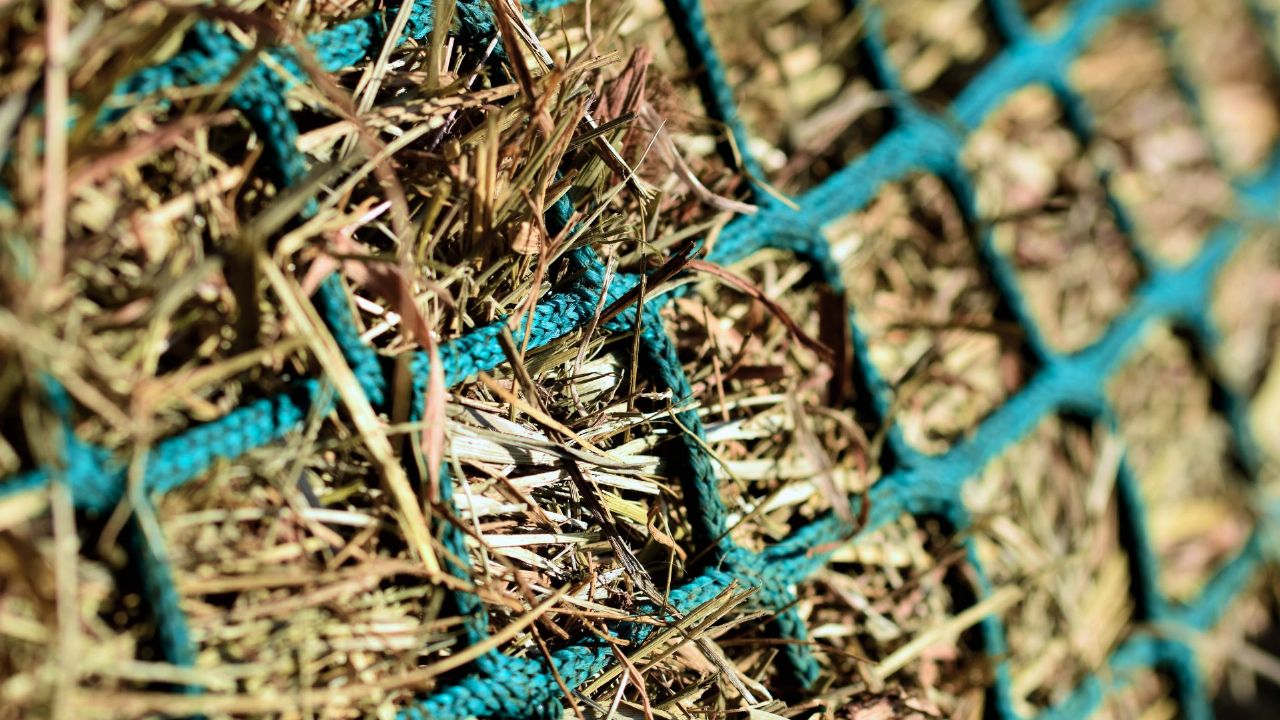10 years of Simple System HayCare!
During its 10 years so far, it has become apparent that HayCare is so much more than a hay replacer...

Why soak hay for horses? Soaking hay is usually done in order to reduce sugar levels for overweight horses or those with metabolic issues such as laminitis, pituitary pars intermedia dysfunction (PPID) / Cushing's Disease and insulin dysregulation (IR). Soaking hay is also carried out for horses with respiratory issues such as asthma, COPD and pollen related allergies.
The hay should be loosened from the bale and soaked in plenty of water. Using a hay net makes it easier, but do not have it tightly packed – the water needs to get in. There is no point in soaking hay if it is already low in sugar, so:
Sugar molecules are relatively small and will be extracted sooner than larger molecules. A significant reduction is achieved in less than an hour.
To reduce sugar levels, do not soak for more than one hour and if the hay is already low sugar, 15 minutes may be sufficient.
How long should I soak my horse's hay for? Hay should be soaked for no more than one hour. Longer soaking removes further nutrition, including protein, a large proportion of minerals and vitamins, all of which are really important to the horse. Long soaking may reduce protein levels to the extent that there is no longer enough remaining to meet the horse’s minimum requirement for this vital nutrient, which is around 8% of total diet for a resting, adult horse in good condition.
Do not risk your horse’s health by prolonged soaking of hay. If you are soaking hay, make sure that the protein and minerals are being topped up elsewhere in the diet, for example with high quality forage pellets and balancers.
Good quality hay can meet the vast majority of most horses’ nutritional requirements, but only if you don’t ruin it first!
Horses with respiratory issues can be very sensitive to dust, fungal spores and pollen. These small particles are inhaled deep into the lungs, causing a range of adverse reactions. For these horses, steaming may be a better option than soaking, as the hot steam ruptures the spores, rendering the harmless. Importantly, steaming preserves the hay’s nutritional value.
Consider steaming hay- instead of soaking hay -for horses with respiratory issues.
Any damp hay, soaked or steamed, should be fed promptly. The longer it is damp, the greater the chance of acid-generating bacteria proliferating. Not ideal for any horse, and especially so for horses prone to gastric ulcers.
The best way to help a horse lose weight when it is doing a little too well is to increase metabolic rate – exercise, no needless rugging – and not to deliver a diet which will result in malnutrition. Over-soaked hay and straw are not, and never will be, adequate nutrition sources and will not meet basic needs. Weight reduction based on a diet deficient in protein may result in a loss of muscle bulk and slow or even no, loss of fat.
Always ensure a diet is balanced for essential nutrition.
Finally, bear in mind that the water hay has been soaked in is a pollutant and should be disposed of into the sewage system, not land drainage.
Should you have any questions about soaking hay, or about balancing your horse's diet appropriately, please contact the equine nutrition team on the Feed Line - 01728 604 008. You can also email info@simplesystem.co.uk or complete our feeding advice request form here.
Refs: Bochnia, M., Pietsch, C., Wensch-Dorendorf, M., Greef, M. and Zeyner, A., 2021. Effect of hay soaking duration on metabolizable energy, total and prececal digestible crude protein and amino acids, non-starch carbohydrates, macronutrients and trace elements. Journal of Equine Veterinary Science, 101, p.103452
During its 10 years so far, it has become apparent that HayCare is so much more than a hay replacer...
Grass has the potential to grow all year, which is different from many other plants. Certain things are necessary for this growth, but if they are not met, the grass will be dormant, waiting for conditions to improve.Â
Rain fall can trigger growth akin to a spring flush, especially if temperatures are high. Even whilst true spring may be in the past, the risk for those prone to laminitis will rise.